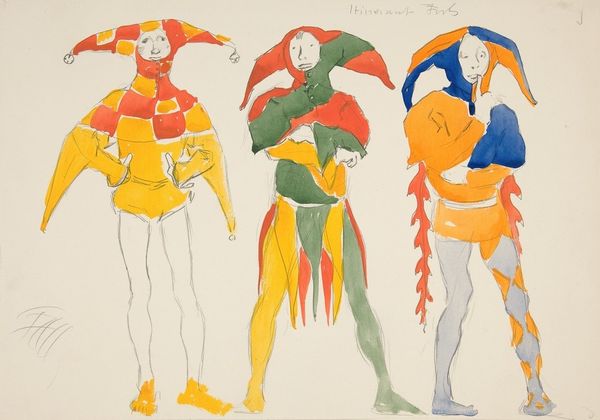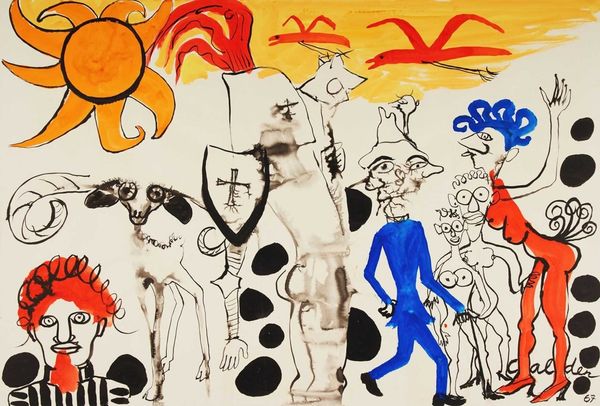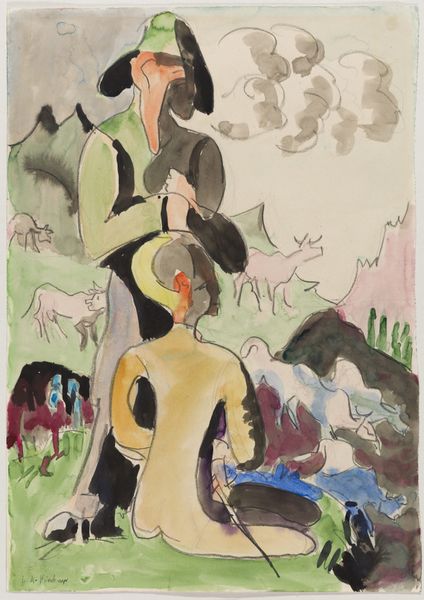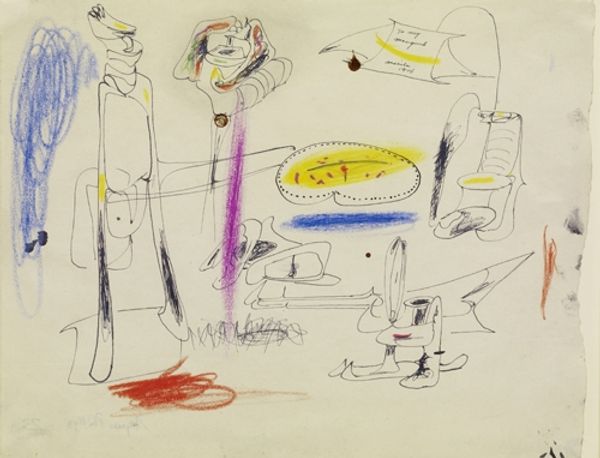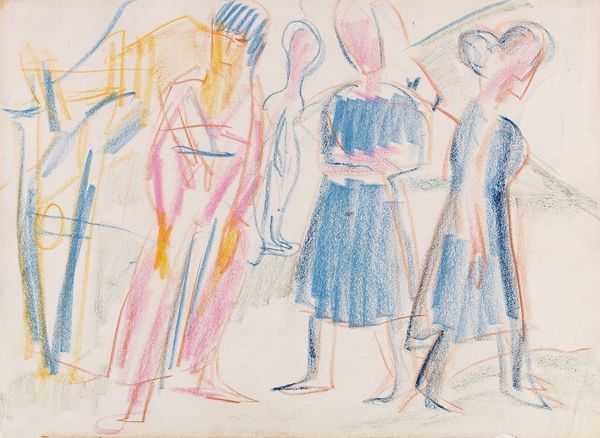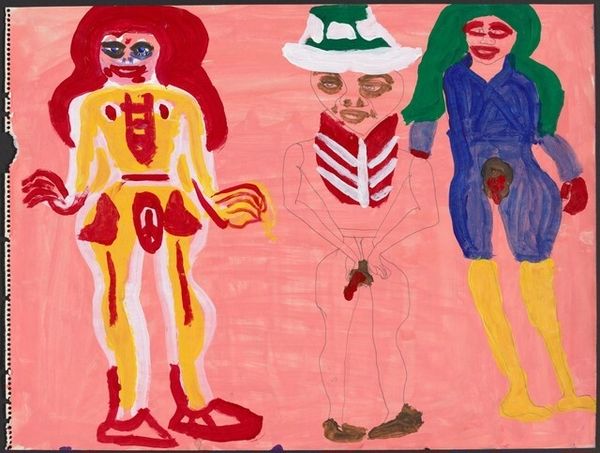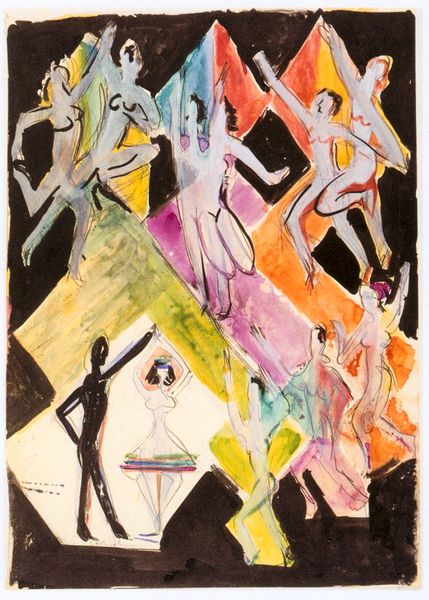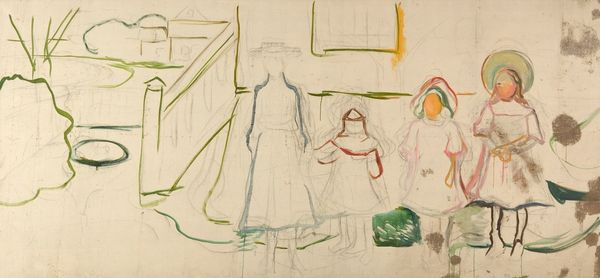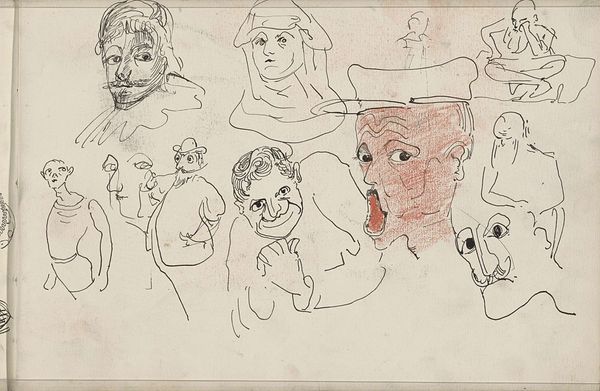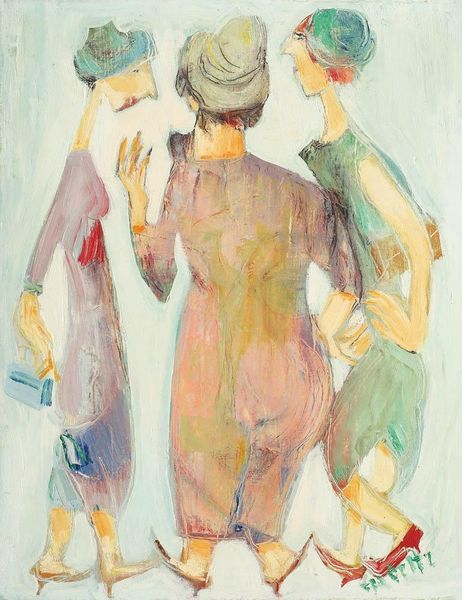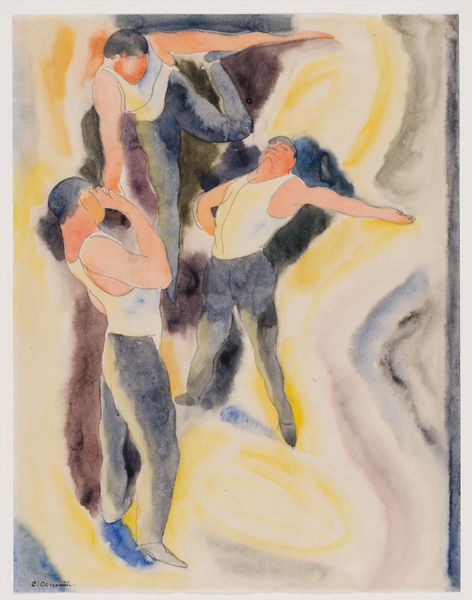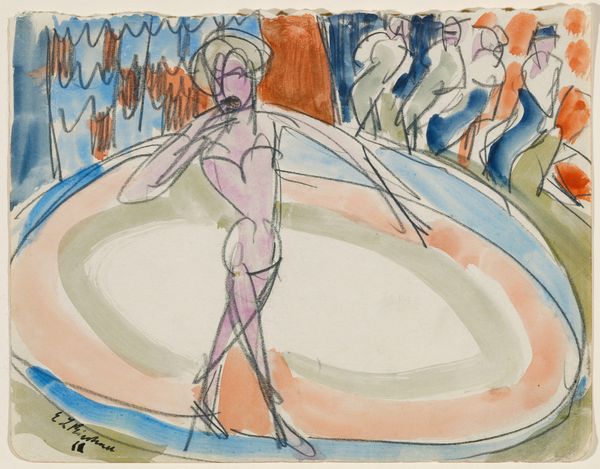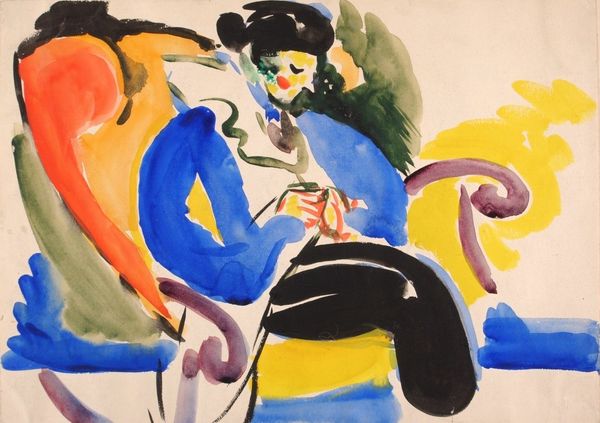
Fools, costume sketch for Henry Irving’s Planned Production of King Richard II
0:00
0:00
drawing, paper, ink
#
portrait
#
drawing
#
paper
#
historical fashion
#
ink
Copyright: Public Domain: Artvee
Editor: Here we have Edwin Austin Abbey’s costume sketch for Henry Irving’s planned production of *King Richard II*, rendered in ink and watercolor on paper. I’m struck by how playful and vibrant these designs are; they don't seem tragic at all. How do you interpret this work? Curator: It's interesting to consider this sketch within the context of late 19th-century theatre and its relationship to historical accuracy. While we now perceive Shakespeare as high art, productions like Irving's *Richard II* were mass spectacles, vying for popularity. How might these somewhat ahistorical, whimsical costumes play into the overall reception of the play? Editor: So, you’re suggesting these aren’t accurate representations of historical garments? That's surprising, given the era's fascination with the past. Curator: Precisely! Think about how visual culture, including theatre, disseminated ideas about history. By prioritizing spectacle and entertainment over historical rigor, what kind of understanding of the past was being presented to the public? Consider also, the figure of the "fool" itself, who often spoke truth to power through jest; how might these visual representations amplify, or perhaps subvert, that traditional role? Editor: It seems these costumes, while aesthetically interesting, also functioned as a powerful medium, shaping public perception of history. That changes how I view this piece considerably! I initially saw them as simple sketches, but you’ve highlighted their broader cultural role. Curator: And remember, the very act of designing costumes, whether historically accurate or not, also constructs a narrative about the play. Costume is key for an art work as a point of spectacle for mass reception and socio-political ideas that the artist aims for the audiences to experience. Editor: Right, I see the bigger picture now! This artwork says a lot about spectacle in the late 19th century and our current society. Thanks for providing this deep analysis of this drawing.
Comments
No comments
Be the first to comment and join the conversation on the ultimate creative platform.
